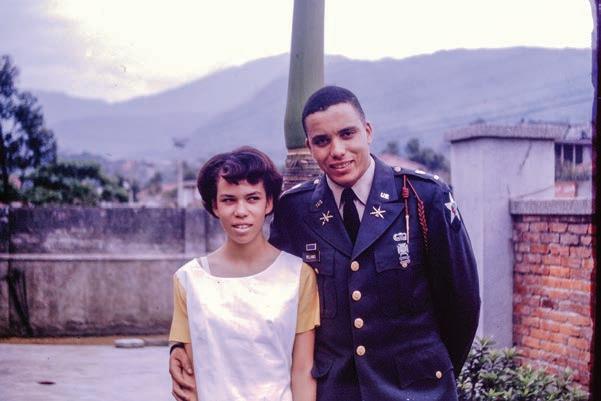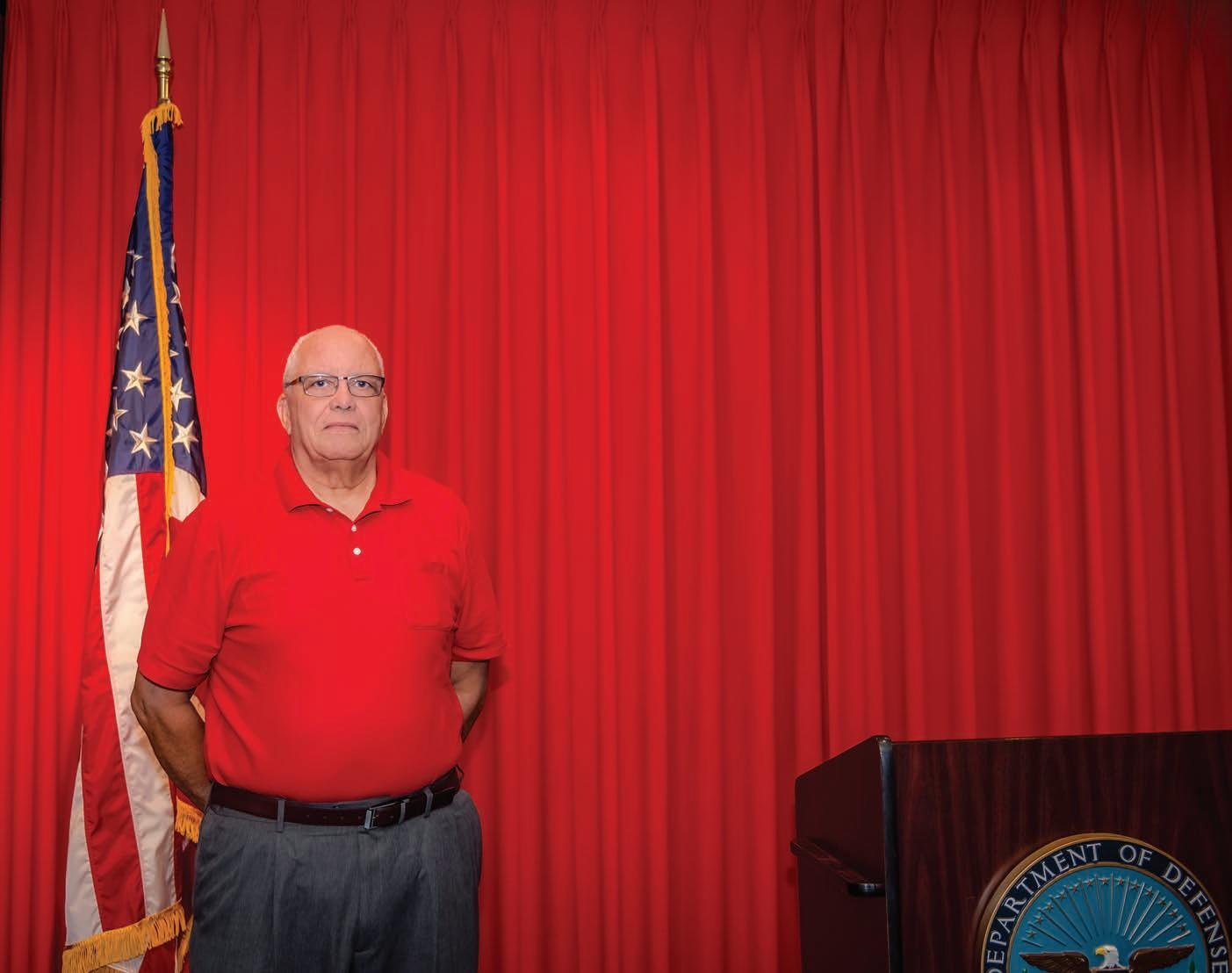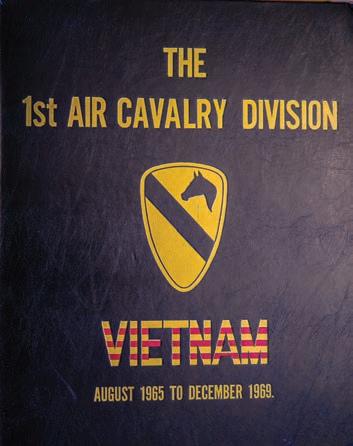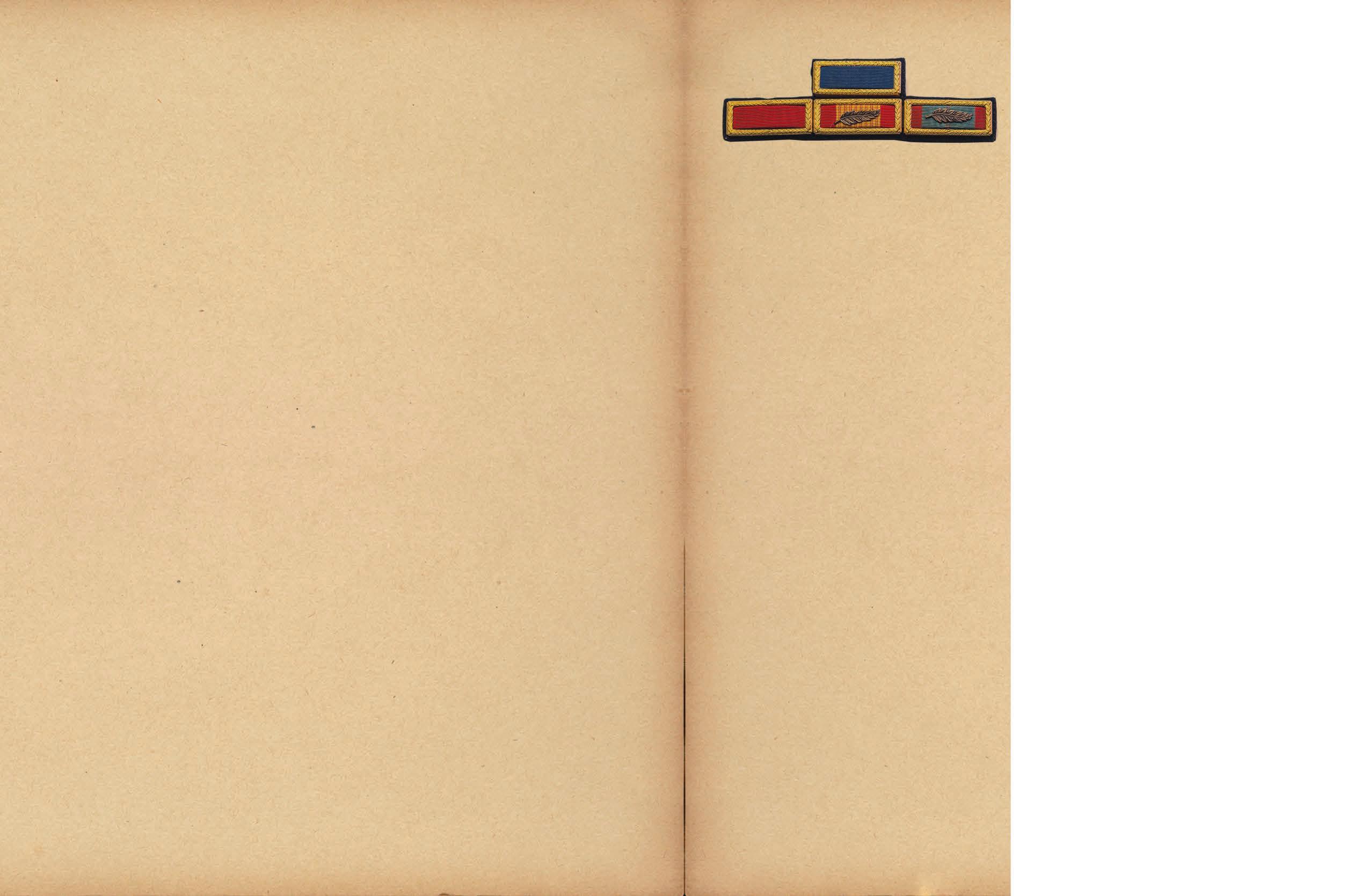
11 minute read
ART WILLIAMS
Original publish date:
November-December 2014
Advertisement
ART WILLIAMS Has Learned to Love The Good Life
www.yumpu.com/user/ thegoodlife
Where is he now?
Army Veteran Art Williams was the Local Hero in the November-December 2014 issue of The Good Life.
In the span of six years, Williams spent two years doing mission work with his wife in the Pacific Islands through the Church of Jesus Christ Latter-day Saints, has recovered from knee replacement and shoulder reconstruction surgeries due to injuries attributed to his time in the service, and has continued to maintain involvement with United Patriot Bodies (collection of all local veterans organizations).
He recently started working with the Honor Guard to honor individuals at the Fargo National Cemetery. Currently, Williams is in the process of joining back up with StarForce MEPS Transportation Service where one of his duties will be to drive new recruits to various locations for fitness and other required testing.
WRITTEN BY: SOO ASHEIM • PHOTOS BY: URBAN TOAD MEDIA
No one is ever promised life will be easy. Or, that when we make decisions, we may want to consider the over-all cinemascope of our life. And not hastily decide a life-long changing decision when it is based on a few of our past performances. Or, during a time that might not have been our brightest or best moments in life.
For better or worse, often many of us do make decisions that eventually will affect us for all eternity. When we look back, usually many years later, we eventually recognize what led to that one all-time and life-altering choice shaking our head as we wonder what in the world was I thinking?


The Best Intentions Art Williams was a Math major at Central State College in Ohio when he graduated in 1964. Art joined the ROTC while he attended college, so when he graduated and decided to join the Army, he knew that decision was one of the “right” choices he made as a young African-American man about to join the thousands of other young and eager college grads in the mid-1960s who believed in righting the wrongs of the world; where good always would win over evil and when necessary, fight for the idealistic causes of the day. Believing with every fiber in their bodies to what President John Fitzgerald Kennedy said: “ask not what your country can do for
you, but ask what I can do for my country.” Like a pied piper, President Kennedy convinced an entire nation that “giving and volunteering” was the noblest and most patriotic ideal any generation of collegeage people could ever offer to do and pay forward in the name of democracy, apple pie and all that is wholesome in the world.
It was if some new brainwashing gimmick befell an entire generation of young people. Some slightly over 18-year-olds or barely over twenty-one year olds and just out of college graduates could be found standing in long lines at malls and in neighborhood parks began signing up to join President Kennedy’s newly formed American Peace Corps. A naïve and very young diplomatic core of volunteers offered their many talents and skills to cross southern borders into other lands as far away as Chile and Peru or fly across the seas and oceans in an effort to “reach out” to the masses of sick and often dying children, parents and elderly people. With only the very best intention and usually with back breaking effort to teach foreigners how to farm, grow gardens, develop and build infrastructures within their villages and tiny towns.

Within a year, thousands had boarded buses and trains, drove in car pools or hitch-hiked to the nearest Peace Corps recruitment office to sign up for as long as three and four year “tours of volunteering” abroad. Many went to countries and cities they had never heard of before to lend their raw labor, talents and often minimal skills to the poorest of the poor who lived in filthy squalor, rampant with contagious diseases, drinking and cooking with polluted water. The infrastructure consisted of dirty, dusty streets half the year during dry periods and muddy pits when it rained. The Peace Corps volunteers worked tirelessly attempting to teach and train their host countries people how to function in a modern world so they too, might live beyond the age of forty-five.
During the same time frame, Vietnam was growing far beyond a mere political conflict. By the end of 1964 and into 1965, Vietnam was a hotbed of blown up villages and under-ground tunnels with a neverending cycle of North Vietnamese soldiers holding one single focus: take over the land growing the main food supply for the southern hemisphere, rice, while simultaneously enslaving civilian women and children.

Those Who Defend Go After graduation from Ohio’s Central State College, as a Distinguished Military Graduate, both the Air Force and the Army wanted to claim Arthur Williams among their bravest and brightest. And while it wasn’t a split second decision for Art to make, because Art’s dad was who he was and Art wanted to be sure whatever he became it would be because he earned it himself. Art opted to stay “Army All The Way.” Life was complicated enough in those days for a black or multi-ethnic person. Art recalls with bittersweet irony why he opted to take his ROTC Army Commission after he graduated from college and explains it this way: “My father was a well-known and respected Air Force Colonel who was a Tuskegee Airman” during World War II. I needed to be sure whatever I did, I would have earned it and it wasn’t given to me because of who my dad was. If I had joined the Air Force, especially before my father retired, I’m not sure I would have been totally certain something didn’t come my way because of who my dad was.” Art felt he could do well in the Army and he did.
For those who are not familiar with WW II history, Art Williams's father (also known as “Art”) was among an elite group of Officers from World War II. As a Tuskegee Airman, Colonel Williams went beyond his comfort zone to become a Logistician and advisor within the US Government and to other governments at the request of our government.”
The Tuskegee Pilots were the only African-American pilots in World War II. Afterward the Tuskegee Squadron disbanded in 1949 and those who stayed with the Air force were shipped over to Europe and elsewhere around the world. After the Second World War was over, Colonel Williams was stationed in Germany. The Colonel, Art, his mother and siblings lived in Germany from 1949 until 1952. From 1954 until 1958 they lived in France, where Art attended a French School as the only American private boys school, until 1958 when another move was made. This time the move was back to the United States capital city where Art graduated from a Washington, D.C. high school in 1960.
Ohio Coeds and Co-mingling Art moved with his family when his father was transferred to Wright Patterson Air Force Base after Art graduated from High School. Four years later, Art finished college at Central State and joined the Army. Colonel Williams, Art’s mother and siblings moved to Taiwan.
Art said, “I’ve been called a survivor” due to having “bounced around so much as a kid and as an adult,” while explaining as to how he views himself as well as life.
Art explained what he thinks by saying, “What I found is that many of us who have traveled and moved away from friends and family tend to become very flexible or wind up really broken. I learned to become kind of flexible.” Thinking about Art as an only son of a higher ranking military man, graduating with a degree in Math and then becoming a twelve-year military person himself, one might presume that Art might have a much higher tendency to be a bit ‘rigid.’ Art is a Mathematician. Generally speaking often there is no flexibility when computing the numbers end of anything. The answer is either correct or it’s wrong! Yet in interviewing this soft-spoken man, I never got a vibe that he is someone who is incapable of looking beyond or outside the scope of “procedure and protocol” so to speak. 16 / THE GOOD LIFE Flexibility means having the ability to reach an alternative plan that yields the conclusion hoped for.

Three Tours Into Hell After his college days at Central State College in Ohio, Art spent twelve years in a soldier’s suit. During those twelve years, Art spent three years in Vietnam. He volunteered to go with the Ninth Infantry Division into Vietnam his first time and second tours; from 1966 until 1968. Art said, “as a Commissioned Field Artillery Officer, he needed to see it and experience what the troops experienced in order to understand what the soldiers he was commanding were going through and how they dealt with what they had to endure.” It was his way of learning how he could become a better Field Commander. His second tour was during the Tet Offensive, known for having the “worst fighting.” As the Battery Commander in the Mekong Delta, his Division was Staff Headquarters during the planning of the invasion into Cambodia. When his tour was completed after the second tour, he was shipped back stateside to Ft. Sill, Oklahoma to train for the Officers Advance Course.
Fourteen months later, Art decided to go back once more. The Invasion of Cambodia was during his third tour as he served with the Cavalry DivisionAirmobile. Art described it as the team that “does everything by air; helicopters primarily. The simple answer is to watch the movie Apocalypse Now.” “After my third tour I served as an Assistant Professor of Military Science at Virginia State College where I completed requirements for a Masters of Education degree. I was then assigned to Germany where I Commanded a Nuclear Capable Field Artillery battery.”
At the end of his third tour, Art decided it was time to leave active duty to return to civilian life. Art liked many of the places he adopted and made his home. One of them happens to be a suburb of Minneapolis-St. Paul where Art and Marie, his wife of the last twenty-nine years met. Art also liked Denver during most of the fourteen years he, Marie and their two children lived there. By the time they left, Art said he was definitely ready to move away. Too many people had moved into his little mountain town where he did more IT Tech and consulting work for many companies around the country.
Art and Marie moved to Fargo approximately four years ago. Art’s last gig was with Corelink Administrative Solutions as a Project Manager in 2010.

When I asked Art “so have you found where or which area or city you liked the most?” He smiled from ear to ear and said, “FARGO! It’s just the best place!” According to Art the West Fargo, Fargo and Moorhead people are “A-number One’s” in his opinion.
Art Williams is a Vietnam Vet and because of his experiences in Vietnam as well as the PTSD he’s suffered with, he feels for anyone who has the misfortune to have so much trauma in their lives regardless of when it happened. Art also visits and

volunteers at the Fargo Veterans Hospital as often as he can because he understands why some of the men he has helped get into counseling have waited for so many years. More often than not he believes many of the soldiers returning from conflicts and wars need to deal with their disorders immediately. Especially PTSD; Post Traumatic Stress Disorder. Knowing what he went through, Art believes this is a disease that will never completely leave someone and it most certainly can be fatal.
Art and Marie Williams are also members of the Church of Jesus Christ of Latter Day Saints. Art, a grandson of a Presbyterian Minister and who was brought up in the Catholic Church, I wondered how such a radical “switch” occurred. Art’s simple answer was that for nearly 41 years he wandered around asking “why?” and feeling he was missing something. Then, during a job interview with the Vice President of a company in Minnesota, who happened to be a devoted member of the (Morman) Church of Jesus Christ Latter Day Saints. Art and the VP began conversing about how they felt and what was important in life for each of them. After a very long conversation, Art decided he wanted to at least go to a service and hear what they do. Art realized when the service was over the first time, he felt more at peace than he could ever remember. That was thirty years ago. Art believes what many people feel; God just wants us to be as good as we can be and to treat one another with as much kindness and understanding as possible.


Art Williams believes he has found the good life. A military veteran who not only believes in his faith but lives it by the good deeds he does for others. Now he and Marie are living in a place Art says is the BEST EVER. •










